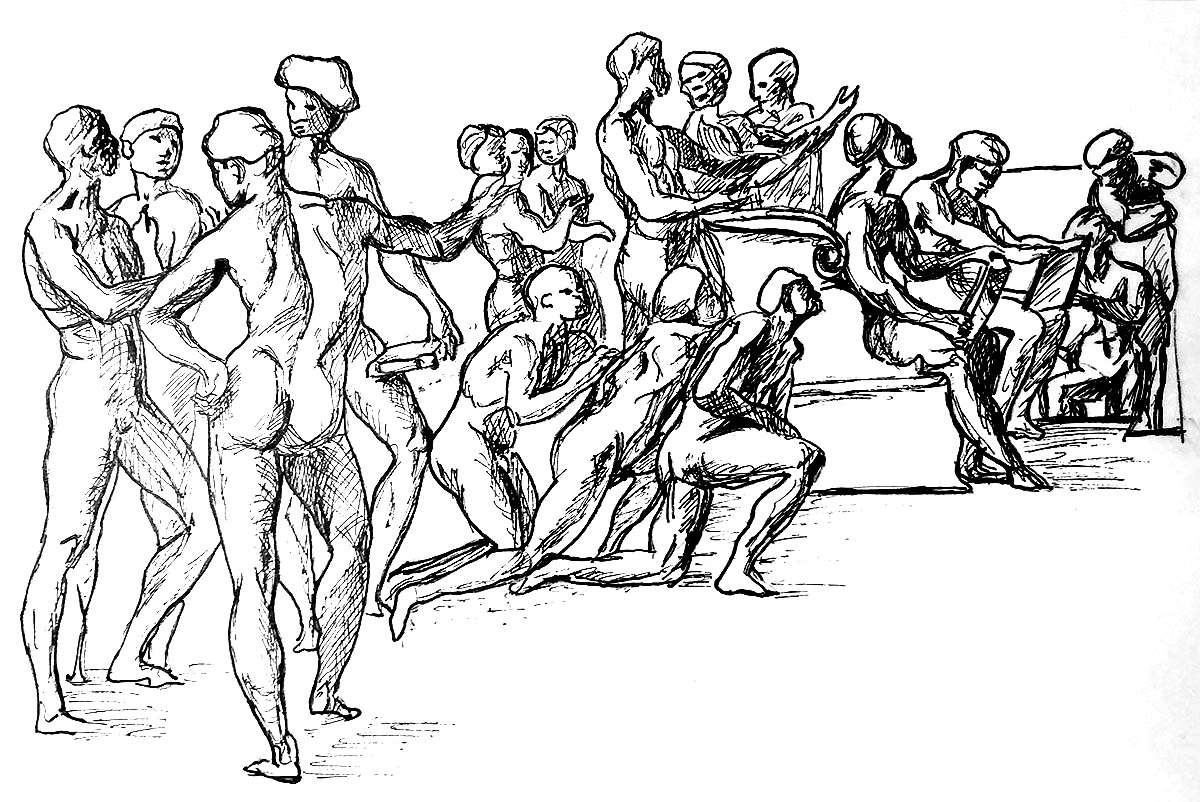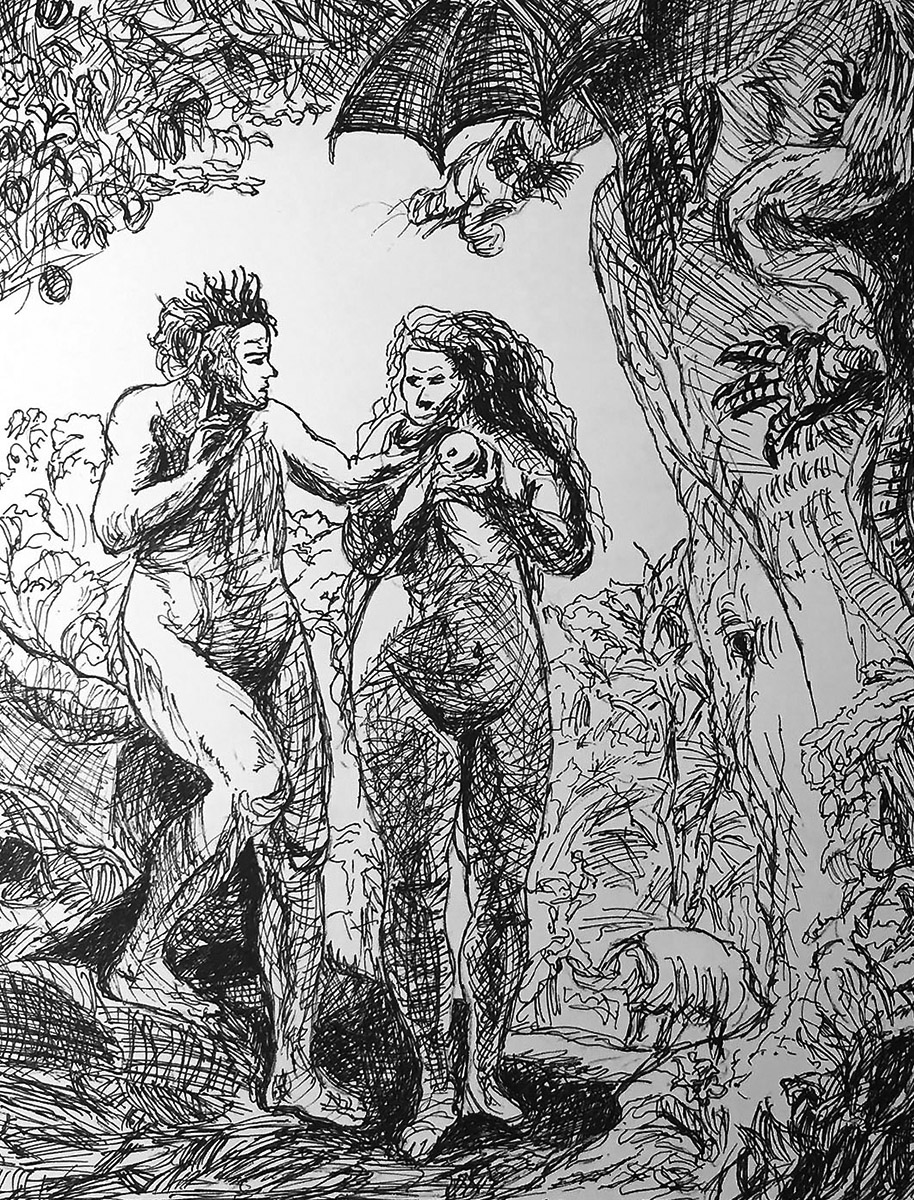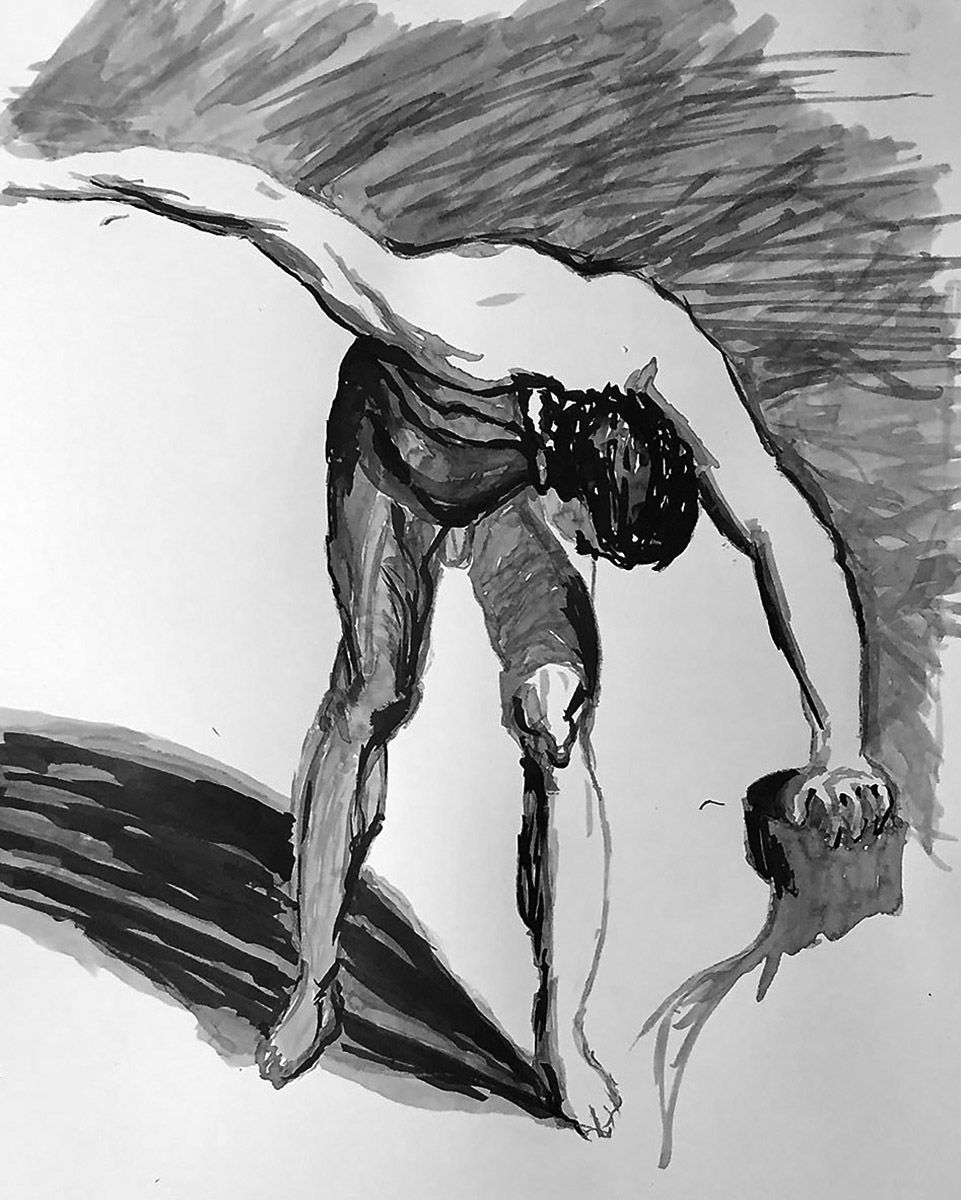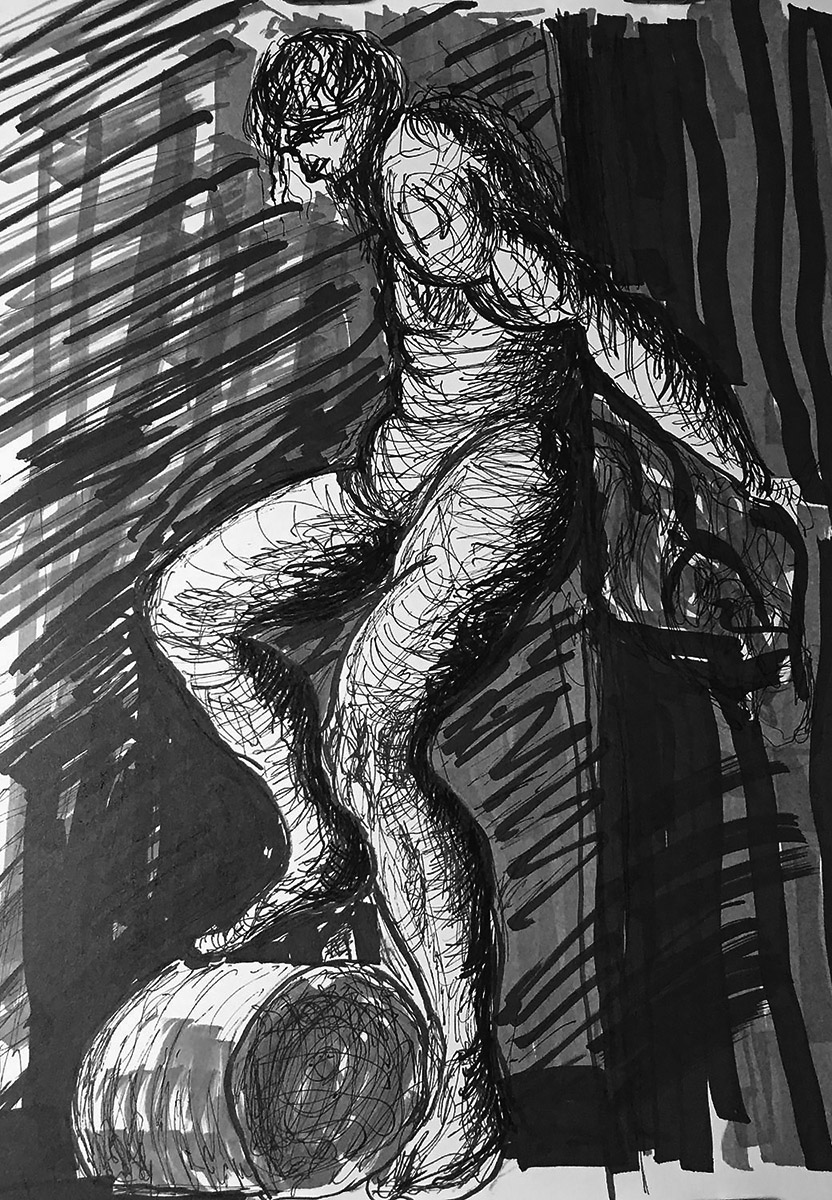
Next up on our old master artist copy-a-thon, we have a drawing in ink copied from a work by Raphael. My copy was done with the ever-popular gel ink pen available at the finest art supply stores. Stores like Target and Walgreens for example. The original by Raphael was done with brown ink over a non-gel black ink pen. It is a study for the his fresco entitled ‘Disputation of the Holy Sacrament’ located in the Apostolic Palace inside the Vatican. At the tender age of twenty-five, Raphael obtained an important commission from Pope Julius II to decorate a ceremonial hall in the Vatican. Saints, priests, scholars, and poets are portrayed in the fresco. This drawing shows a detail of the overall composition. To portray the figures as lively and realistically as possible, Raphael created nude studies of each after a live model. The individual studies are brought together in this drawing to determine the spatial relationship between the figures. Now I’m not a writer so I am already getting very tired of writing. So I turned to technology to help me write about Raphael.
I used the artificial intelligence wunderkind known as ChatGPT to write about Raphael’s personality. According to ChatGPT, Raphael was gentle and affable. He had a great sense of humor and a warm, welcoming demeanor. He was easy to get along with. He was devoted to his faith. Raphael was highly skilled in networking and socializing. He was well-liked by both royalty and popes. On top of that he had wit, charm and of course, was incredibly artistically talented.
I used to admire Raphael, but due to ChatGPT, I find him very annoying. And that my friends is progress.
What about the subject of ‘Disputa’? Well, what about it ChatGPT? I tried to ask ChatGPT and it told me and I quote “!
Something went wrong. If this issue persists please contact us through our help center at help.openai.com.” So there you go, that is all I have for today.
Click here if you want to see an image of the study of the Disputa by Raphael.



